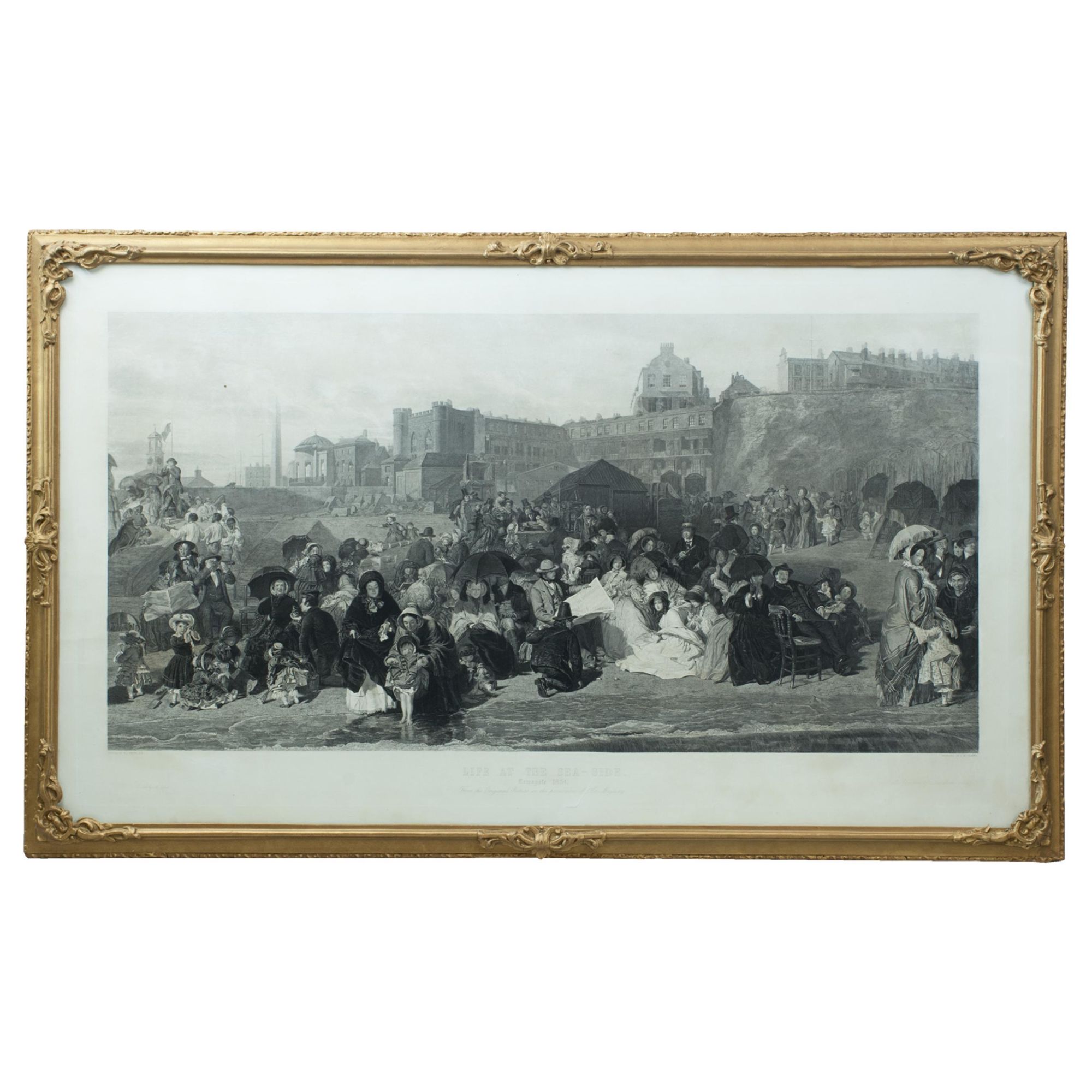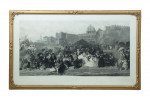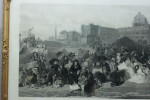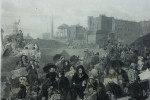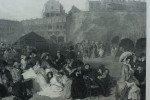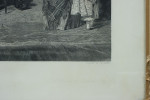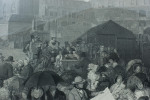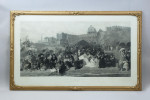- Home
- Artwork, Paintings and Prints
- Ramsgate, Life At The Sea-Side
Ramsgate, Life At The Sea-Side
Ramsgate, Life At The Sea-Side
William Powell Frith, Life At The Sea-Side Engraving.
An exceptional and impressively detailed Victorian engraving by C. W. Sharpe, after William Powell Frith's celebrated oil painting Ramsgate Sands - more simply known as Life at the Sea-Side, Ramsgate 1854. The engraving was taken from the original painting in the possession of Her Majesty Queen Victoria. This work marks Frith's first great panoramic narrative of modern life, vividly capturing the hustle and bustle of Victorian society at leisure by the sea.
The scene depicts a lively summer's day at Ramsgate, a popular seaside resort on the Kentish coast. The beach is crowded with families, children, and elegantly dressed visitors-women in long dresses and bonnets, men in suits and top hats. Behind them, bathing machines (wooden huts on wheels used for modest sea bathing) line the shore, while seaside buildings and cliffs provide a dramatic backdrop to the teeming scene.
Frith's meticulous eye for character and detail is evident throughout: children play in the sand; fashionably dressed young ladies stroll or rest; entertainers, tradesmen, and a troupe of minstrels animate the foreground. Among them, Frith included a self-portrait-he peers over the shoulder of a man on the far right, behind two ladies and a girl in white. The small child paddling in the shallows near the centre, gazing out toward the viewer, is thought to be the artist's daughter. The composition is viewed from the sea looking shoreward, inviting the viewer into the scene as both observer and participant. Many of the landmarks visible in the background-including the clock tower, granite obelisk of 1822, and the castellated buildings on Harbour Parade-remain recognisable in Ramsgate today.
Frith (1819-1909) was one of the most important Victorian artists of the nineteenth century. His panoramic masterpieces, including Life at the Seaside - Ramsgate Sands (1854), Derby Day (1858), and The Railway Station (1862), broke new ground in their depictions of contemporary British life and social diversity. Elected to the Royal Academy in 1853, he presented The Sleeping Model as his Diploma work the same year.
When Ramsgate Sands was exhibited at the Royal Academy in 1854, it was an immediate sensation. Queen Victoria, who had fond memories of visiting Ramsgate with her mother between 1825 and 1836 (staying at Albion House, visible in the painting as the prominent building overlooking the beach), expressed a strong desire to purchase it. Although the painting had already been sold to the dealers Messrs. Lloyd for £1,000, a special arrangement was made: Her Majesty could buy the work for the original price, on condition that the dealers retained the right to borrow it for engraving and to profit from the resulting prints.
The painting's success was immense-critics praised Frith for his acute observation of the world around him and the diversity of his characters. Its popularity led to the widespread circulation of Sharpe's engraving, which brought this lively vision of Victorian leisure into countless homes across Britain.
In 1857, the royal couple invited Frith to paint the marriage of the Princess Royal, but he declined, occupied at the time with completing another of his masterpieces of modern life, Derby Day.
Frame size:- 78 cm high by 128 cm wide.
Dimensions:
1850-1899
1854
Engraving
United Kingdom
Good condition, slight creasing below the title.
Thank you for your enquiry.
We will get back to you soon.
Please create wishlist to add this item to
RELATED ITEMS

